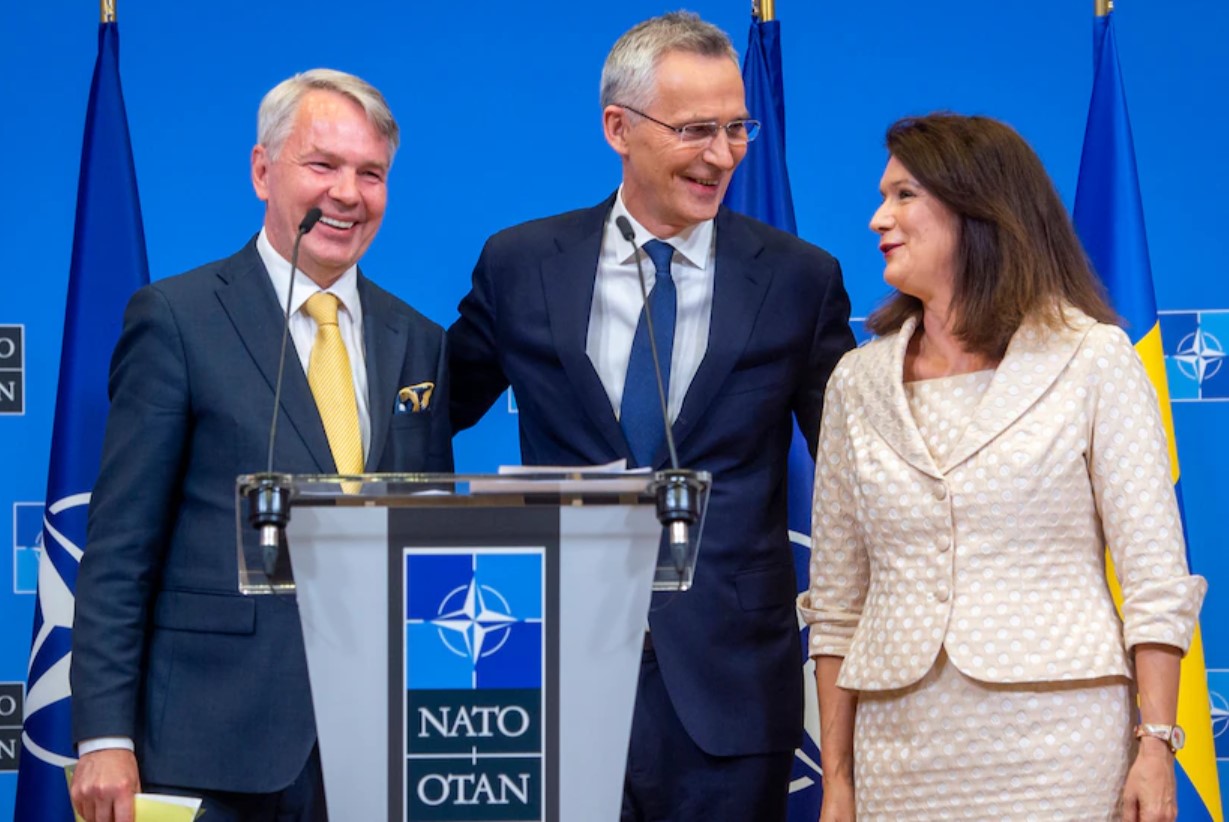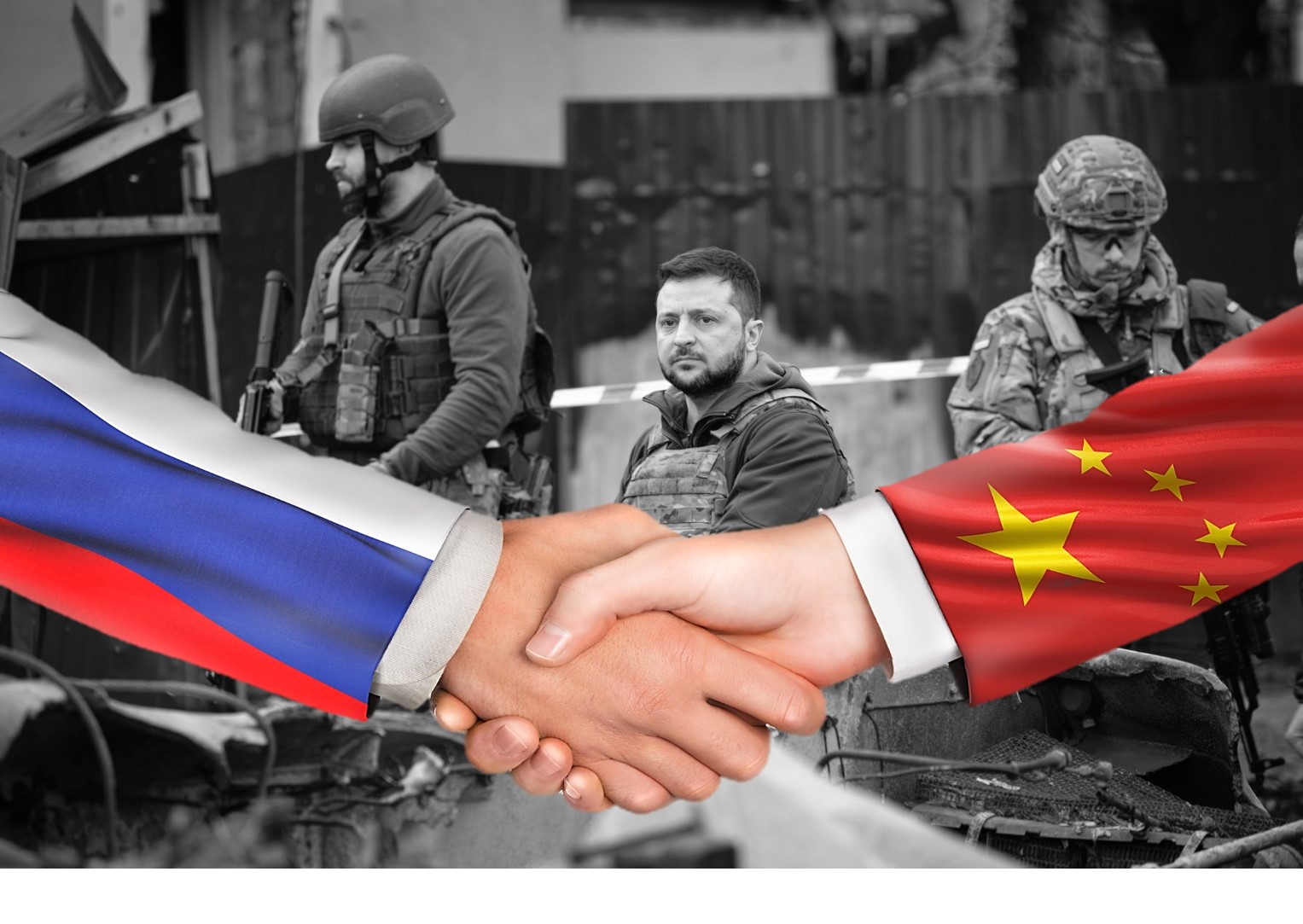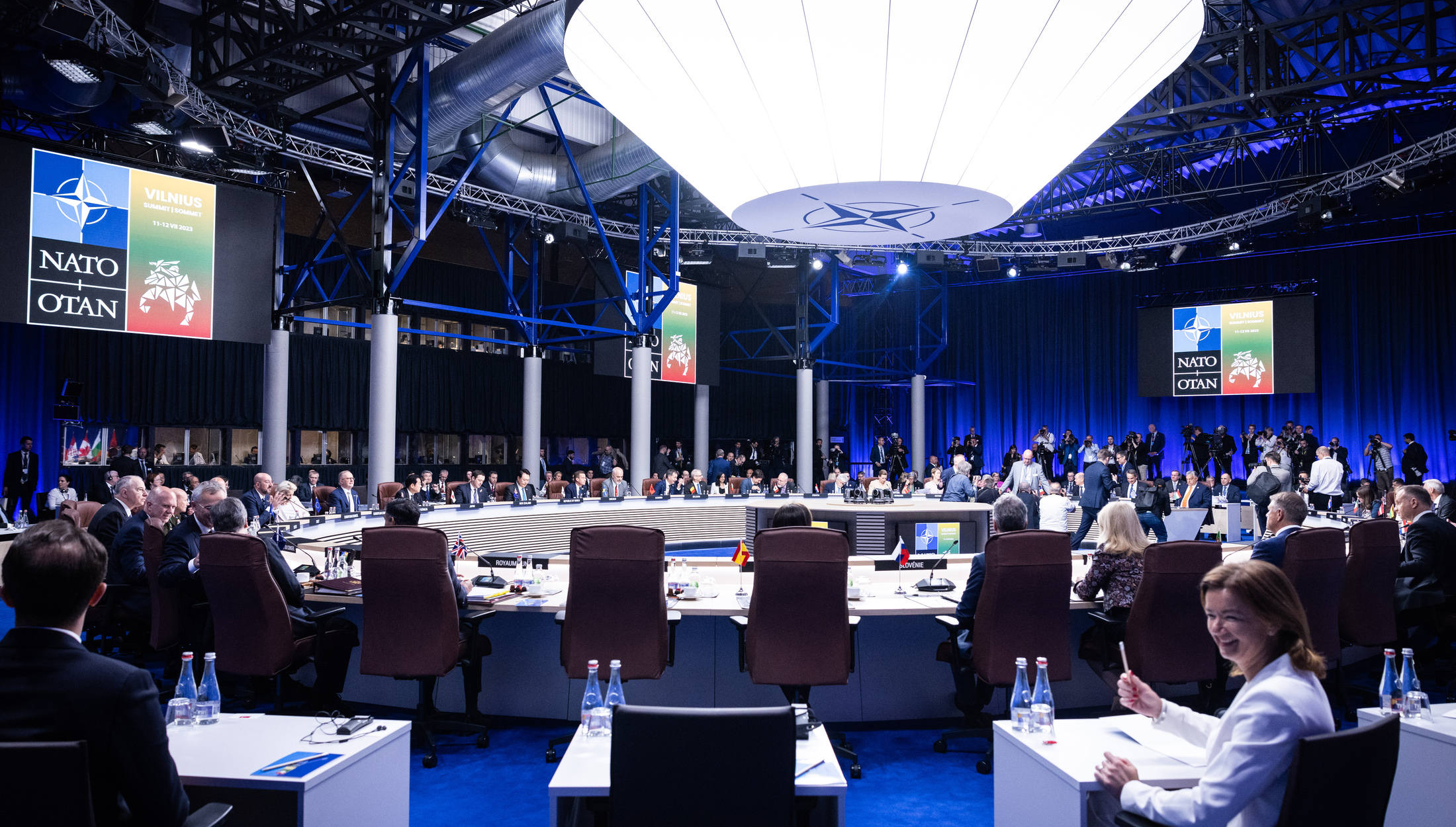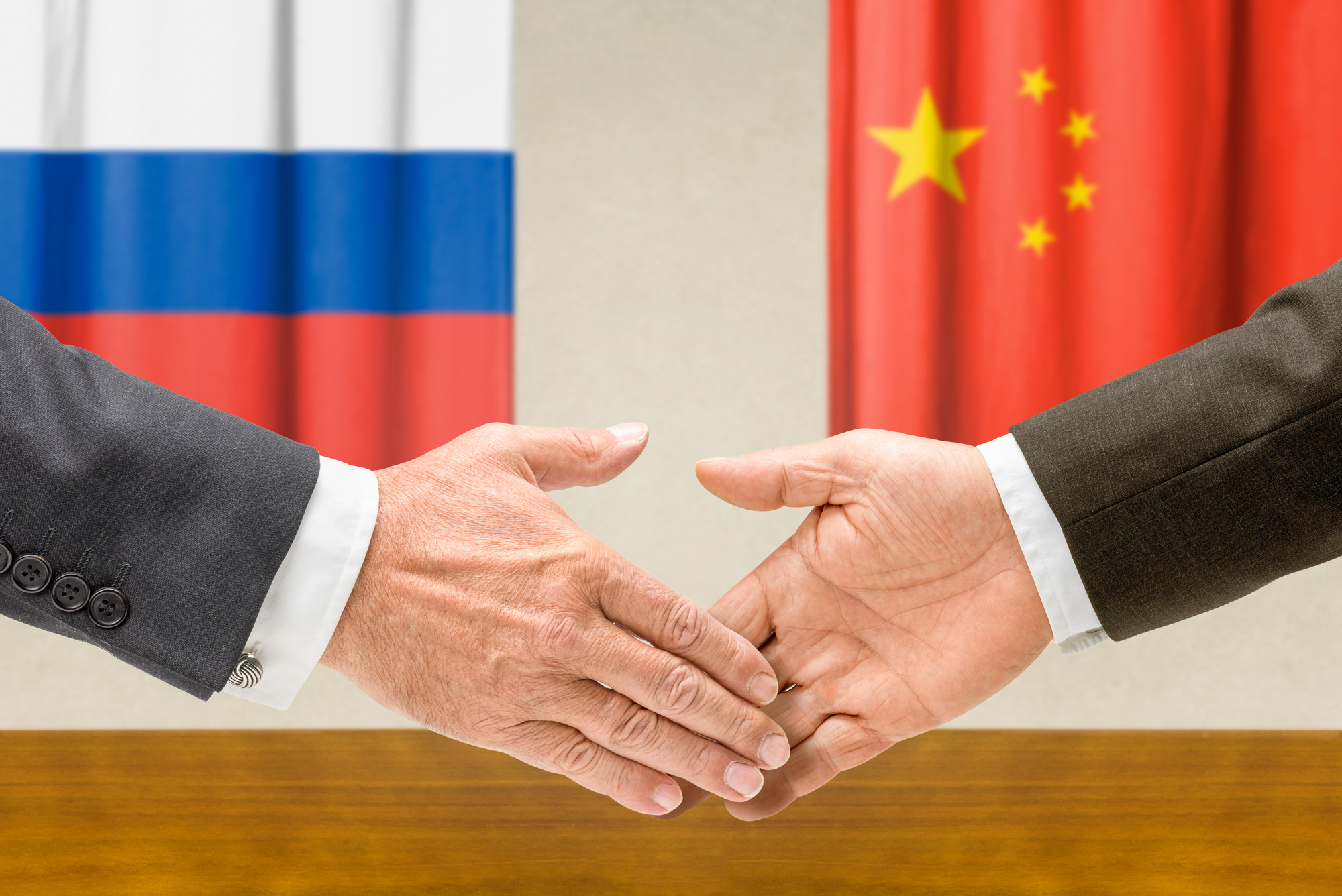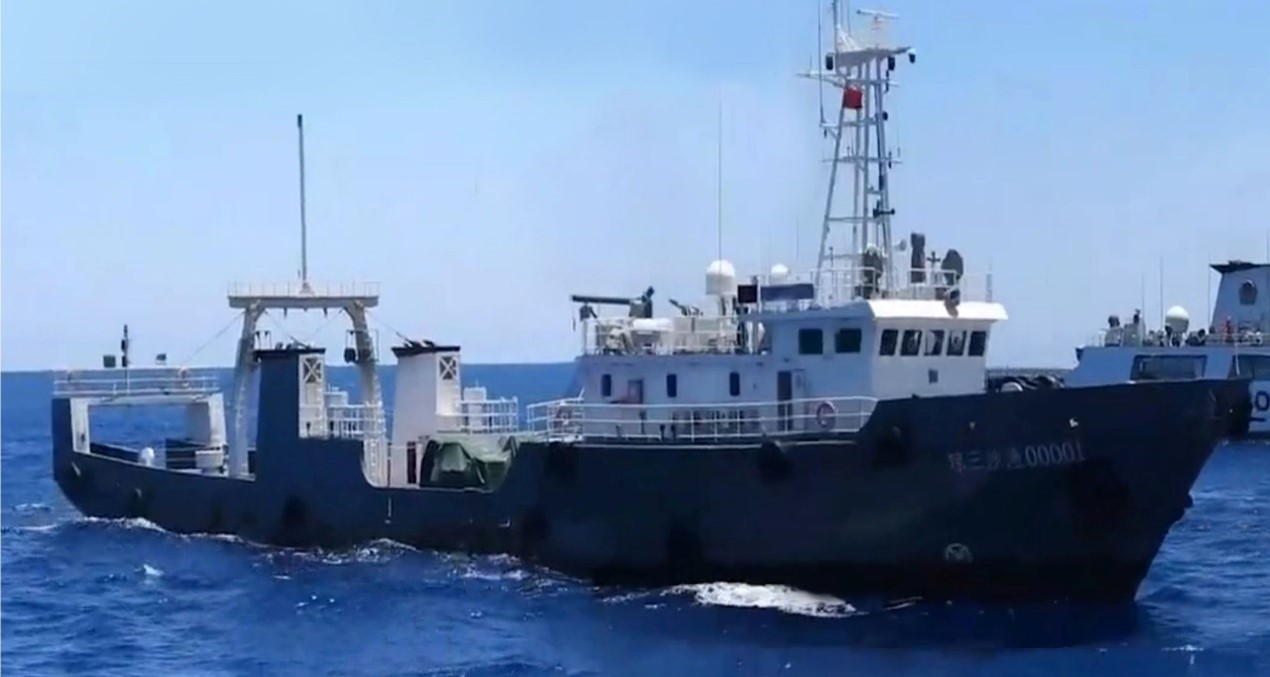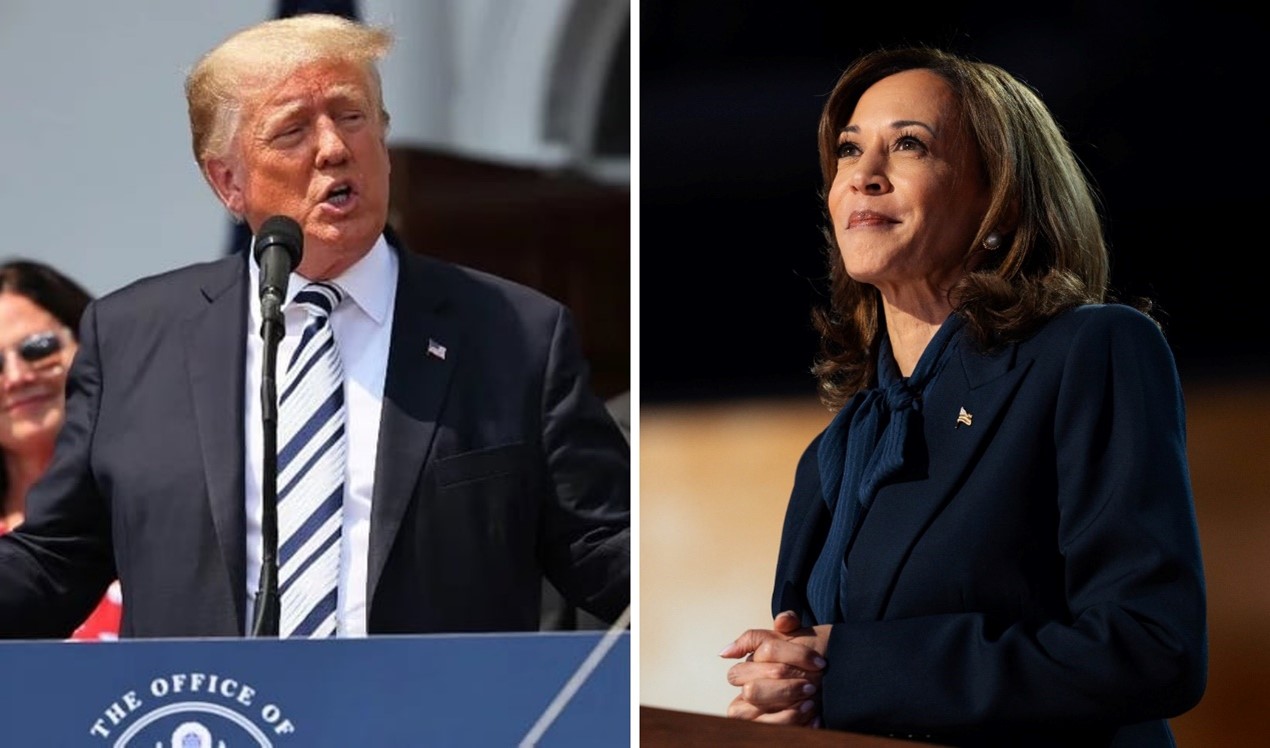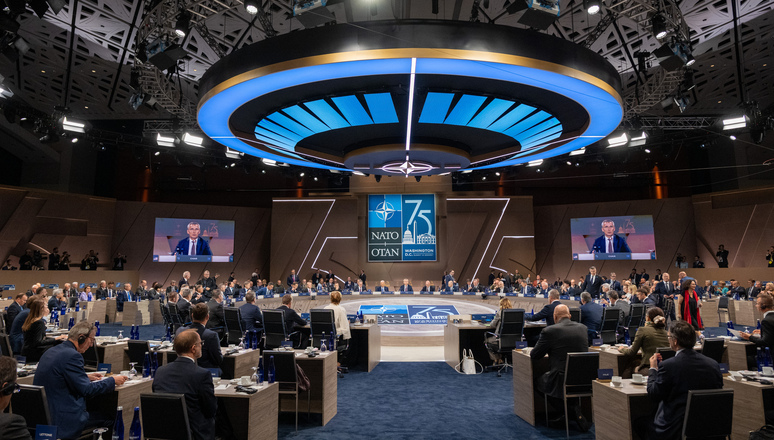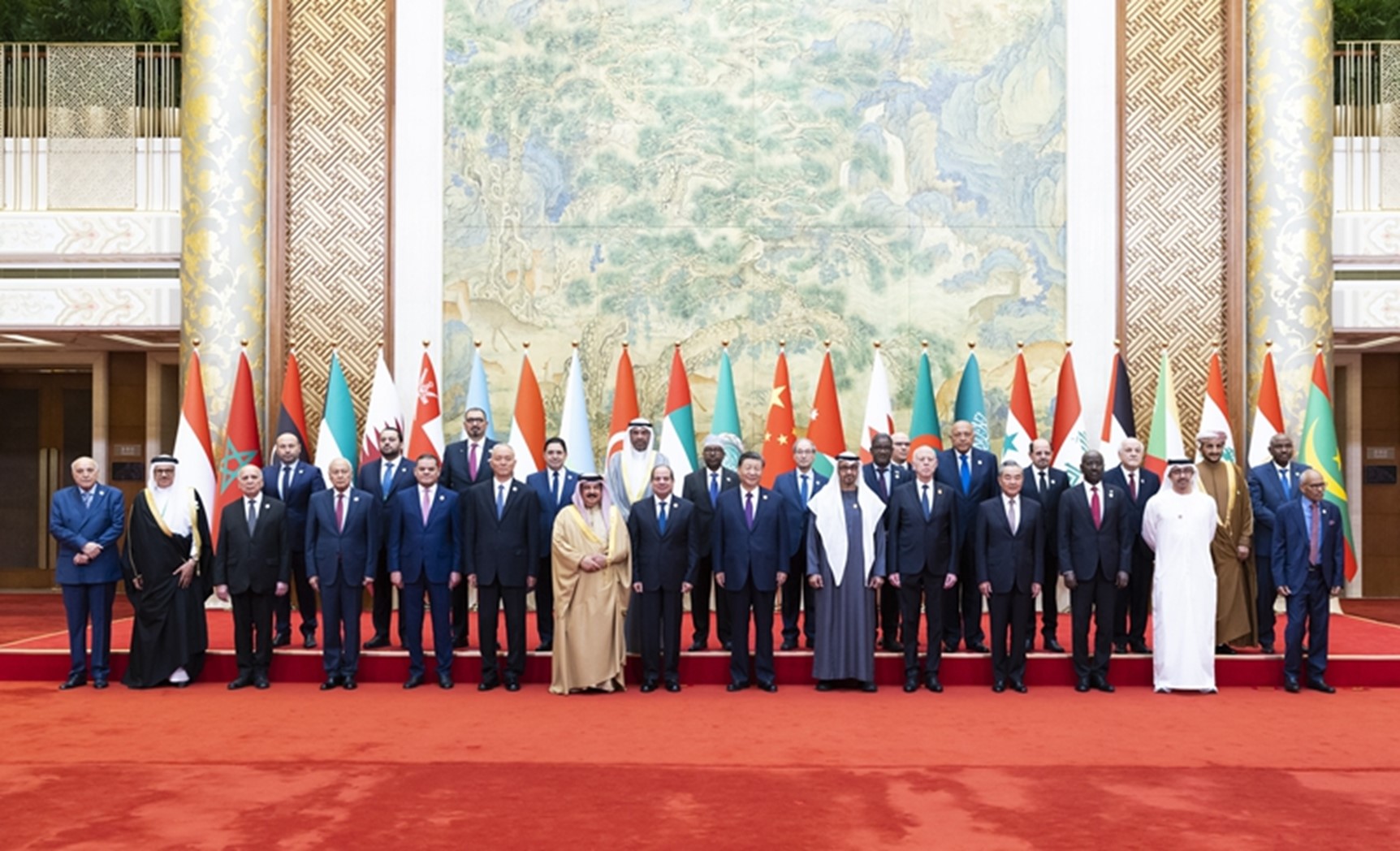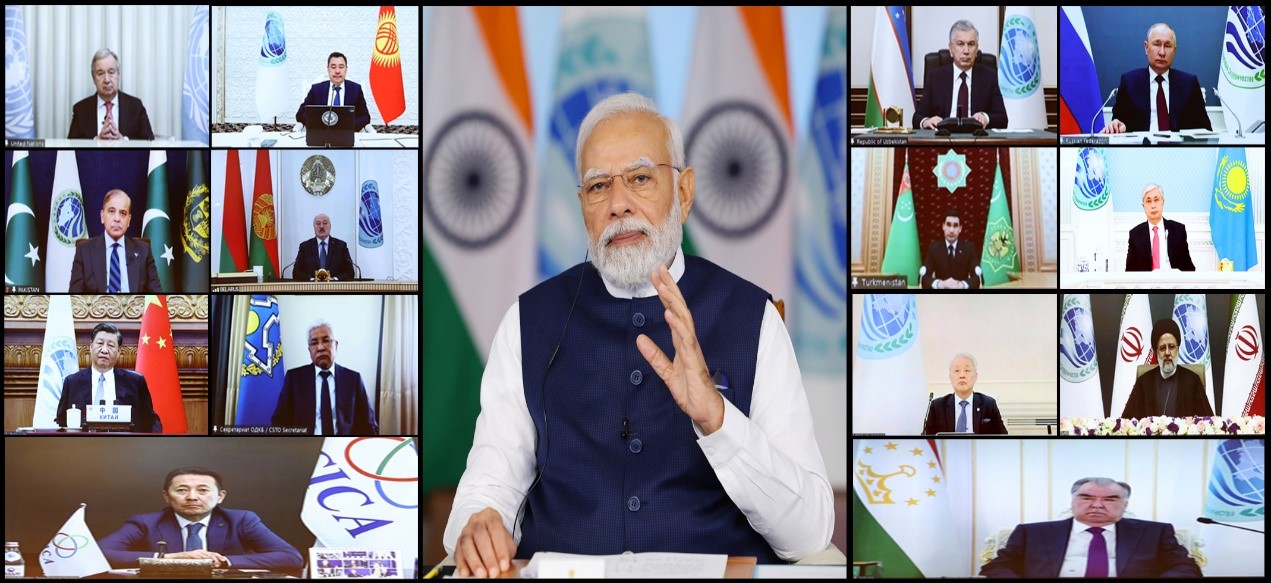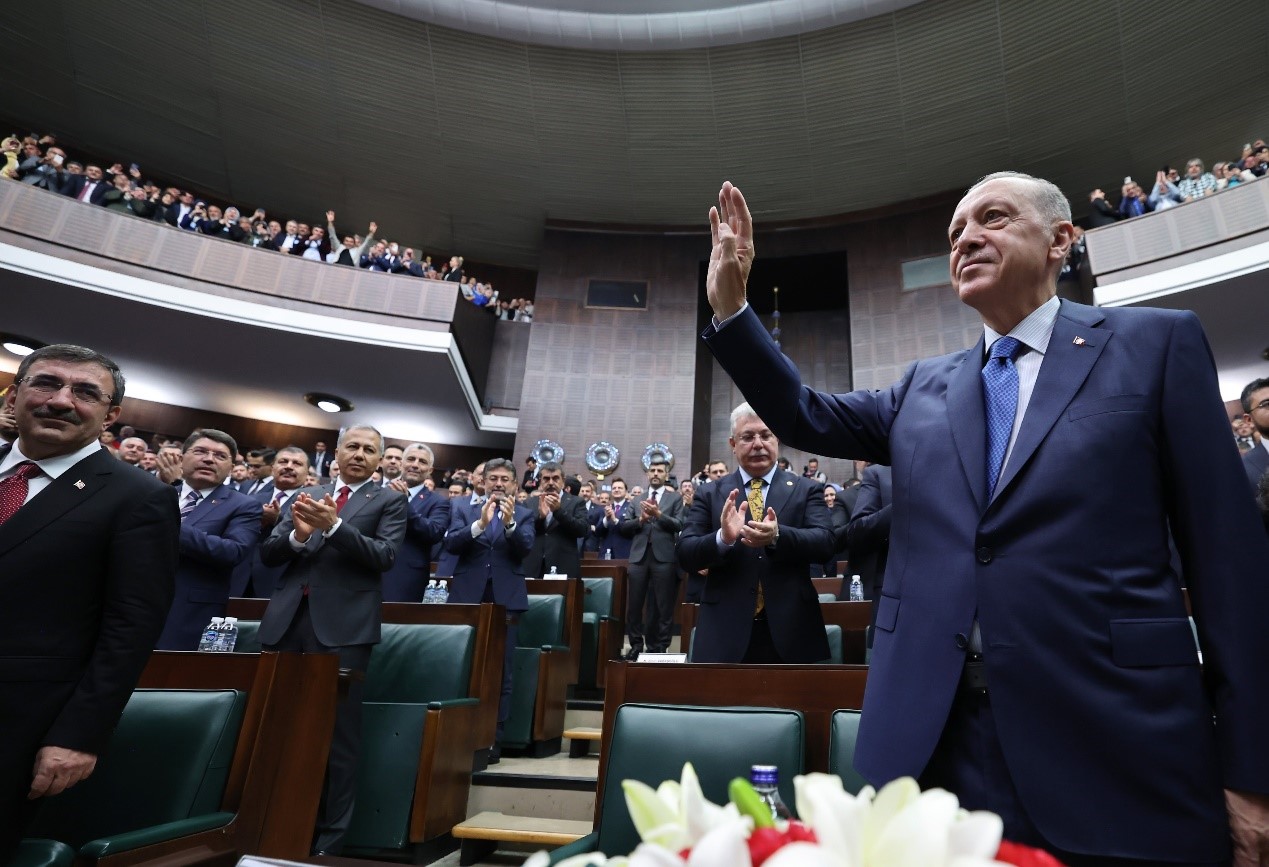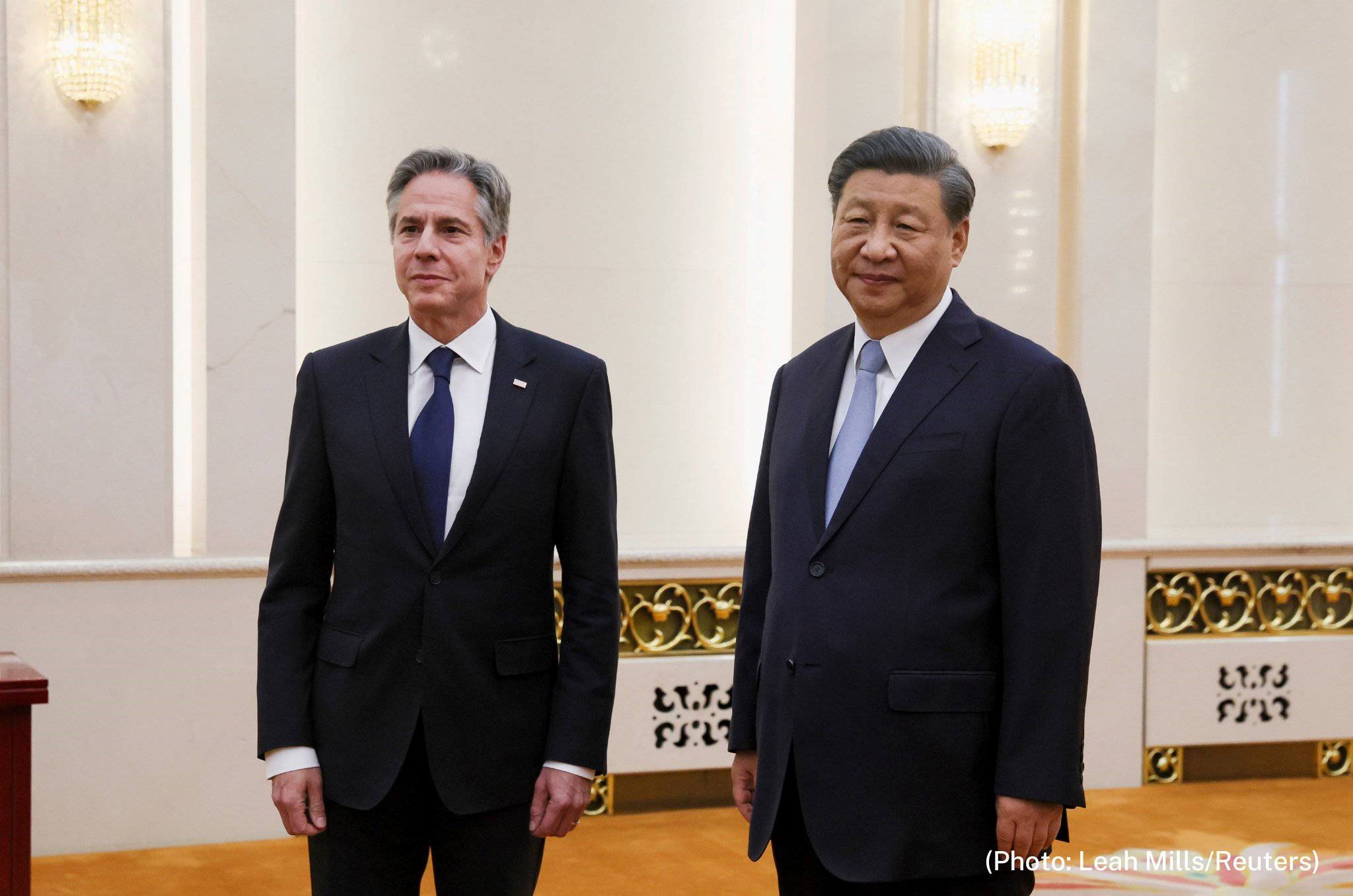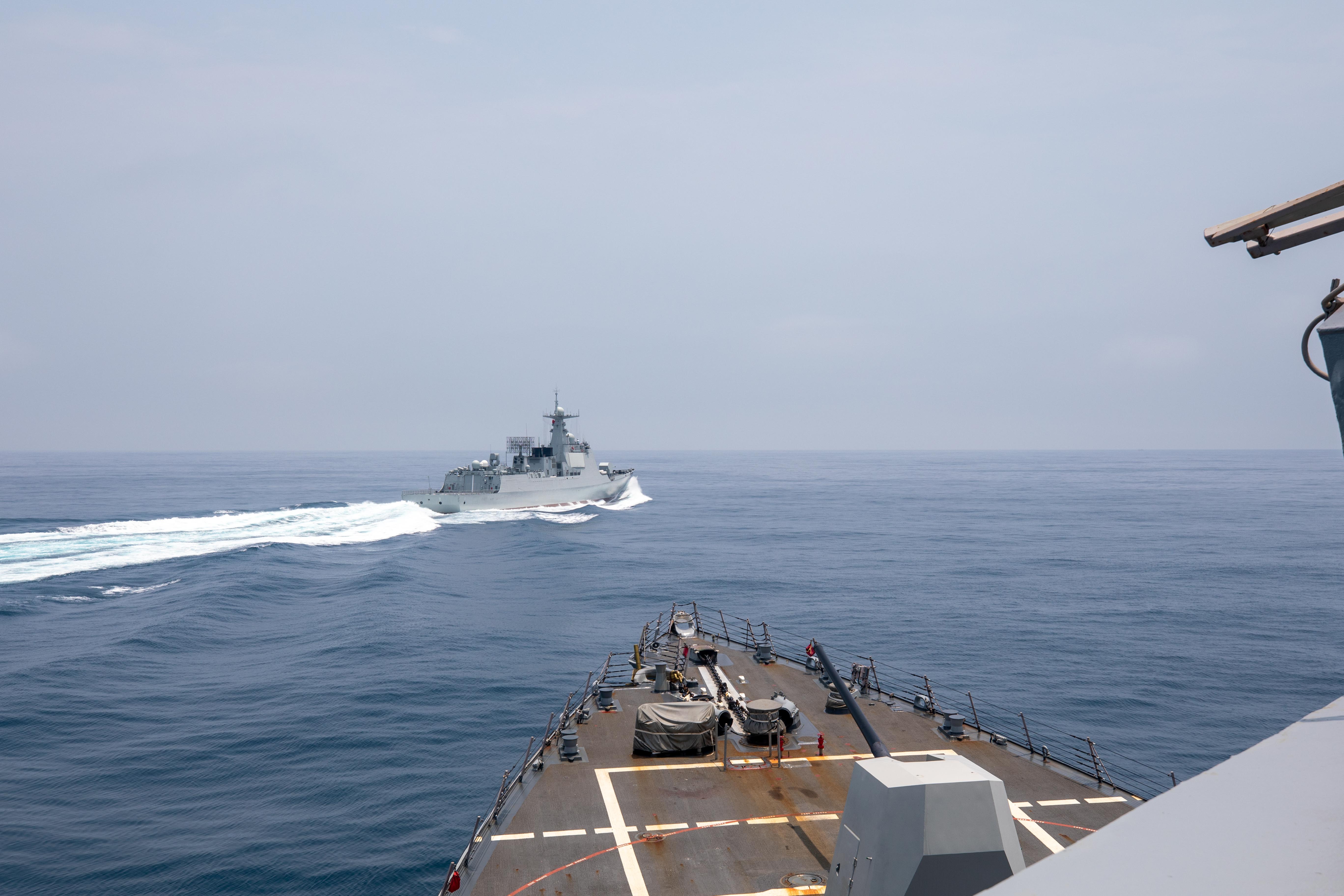The two binary opposite views on what Finland’s NATO accession means tell a bleak story of two rivaling camps, and how they interpret their security. Finland, however, is now prepared for the worse.
Picture source: NATO, July 5, 2022, U.S. Department of Defense, https://www.defense.gov/News/News-Stories/Article/Article/3083359/sweden-finland-move-closer-to-nato-membership/.
Finland’s NATO Membership Sparks Binary Responses
Prospects & Perspectives No. 23
By Sari Arho Havrén
In 2007, then-Finnish Minister of Defense Jyri Häkämies gave a speech in Washington, D.C., about Finland’s security policy. He argued that despite Finland’s location in one of the safest corners of the world, Finland was facing three main security challenges: Russia, Russia, and Russia.
He concluded that Finland was not alone in this position in Europe.
Fifteen years later, this challenge materialized when Russia launched its unprovoked war of aggression against Ukraine — a war that, at this writing, has been ongoing for 14 months. During the past 16 years, the world’s democracies have been in continuous decline, finding it difficult to defend their core values. This has made the rise of autocrats easier, not only that of aggressive Russia, but foremost, that of an increasingly assertive China. Meanwhile, the European Union has failed to reliably strengthen its defense capabilities. The world’s security landscape has become unstable and changed dramatically in a noticeably brief time. Pragmatic Finns were quick to act, and in less than three months after Russia attacked Ukraine, Finland had submitted its NATO application.
Both Russian and Chinese talking points have long considered Finland as a neutral country, notwithstanding that Finland has not identified itself as politically neutral since joining the European Union in 1995. Finland remained, however, militarily non-aligned.
Finland joined NATO’s Partnership for Peace Programme in 1994, and consequently, began to adapt its defense to NATO standards — a precondition for interoperability with the allied forces. In 2014, Finland become one of NATO’s five Enhanced Opportunities Partners. After this, Finland began to abandon its ideal of military non-alignment; while not yet formalizing any alliance, it was keeping a “NATO option” open. Against this backdrop, Finland was as “NATO ready and compatible” as possible when it finally became a full member of the alliance on April 4 this year. The entire accession process took less than a year — the fastest ever.
Finland for all, and all for Finland
Russia’s invasion of Ukraine and Finland’s and Sweden’s NATO accession signify historical changes to the European security architecture. On April 4, Secretary General Jens Stoltenberg welcomed Finland to the NATO family, stating “One for all, all for one.” For Finland, the alliance is an additional insurance policy, which gives it protection against possible Russian aggression. In return, Finland gives back robust defense capability.
Finland’s military and armed forces are strong enough to provide support for its NATO neighbors, in the Baltics, or for other Nordic states. Finland’s wartime strength, at about 280,000, is greater than the other Nordic countries combined. Finland has about a 900,000-strong reserve, and, along with Poland, Finland has the largest field artillery in Europe, with modern weaponry. The Army, Navy, and Air Force, all branches of the armed forces, carry long-range precision, and in December 2022, a purchase decision of 64 new F-35 fighters was made. Beyond this, Finland polls remarkably high regarding citizens’ willingness to defend their country, recently at 82 percent.
China conforms to Russia’s viewpoints on Finland’s NATO membership
Finland, Sweden, and NATO agree that the new members bring stability to the Baltic Sea region through their strong capabilities and by strengthening NATO’s deterrence. However, Russia and China perceive it contrarily; for both, the U.S. and NATO are the main adversaries to the extent that NATO has become the scapegoat that legitimized Russia’s invasion of Ukraine.
Finland’s accession into the alliance was catalyzed by the Russian invasion of Ukraine, which made its threat to Finland more concrete, but Finland also joined the alliance at a time when NATO had just freshly described China as a systemic challenge, for the first time. In June 2022, NATO’s Strategic Concept took a hard line towards Beijing, for the first-time mentioning China’s military ambitions, assertiveness against Taiwan, and close ties with Russia. NATO’s Secretary General has not since saved his words in describing China as a regional bully who together with Moscow is pushing back against the rules-based international order.
In the past, Beijing has echoed Russia in actively resisting efforts to enlarge NATO. Thus, in Beijing’s eyes, Finland’s position as a new NATO member, has changed it from a neutral country into a country under the influence of the U.S. Officially, China’s Foreign Ministry has said that the alliance will bring a new factor to Finland’s bilateral ties with China.
Prior to Finland’s official submission of NATO application, while Finland was still visibly moving towards it, Russia’s more direct threats to Finland were accompanied by China’s milder tone calling both Finland and Sweden to follow “the principle of security indivisibility,” and to build a “sustainable regional security architecture” — concepts that can be found in China’s Global Security Initiative. During Finland’s accession process, China repeatedly reiterated its position on Europe’s security, emphasizing the legitimate security concerns of all parties, but in reality, China has run into controversy as it has not condemned Russia’s invasion of Ukraine. On the contrary, China has deepened its defense and military cooperation with Russia — falling short only of open arms deliveries — which has made it clear that Beijing is more sympathetic to Russia’s security concerns and its security spheres of interest than those of Ukraine’s. Thus, China’s calls for a sustainable European security architecture, meant to enable “long-term peace and stability of the EU,” ring closer to supporting Russia’s demands. None of this resonates well in Finland nor other Eastern Flank countries. The neutral security architecture is demonstratively not so secure, especially for those bordering Russia.
Once Finland became a full member of NATO in early April, Chinese analyses of Finland’s membership could be summarized in three points: Abandoning the rational “neutral” stance between the major powers speaks of current Finnish politicians’ lack of strategic vision; Finland has made its position more dangerous by abandoning its “neutrality”; and simultaneously its association has made Europe’s security landscape more precarious.
Moreover, Chinese analysts assessed that, with its NATO membership, Finland lost its position as a bridge between Russia and Europe. The Chinese observations closely followed Russian warnings to Finland before and after the membership, arguing that the alignment would push Finland to the forefront against Russia, potentially also spurring Moscow to boost its nuclear deployment. Russia seriously lags behind the NATO alliance in conventional weapons, and therefore several Chinese views have emphasized that Russia would have no alternatives but to upgrade and increase its nuclear capabilities. Following this logic, NATO is seen as the irresponsible party forcing Russia to demonstrate its nuclear strength.
Although self-inflicted by Moscow, Finland’s accession to NATO is being used by both Russia and China as yet another example of NATO’s eastward expansion. Chinese state media has raised concerns that such a strengthening of NATO may pave the way to make NATO increasingly involved in Asia, with China as its primary target. Increased cooperation with Japan and South Korea is cited as an example of NATO’s influence beyond Europe. All this lends itself to Russia and China portraying the U.S. and NATO as belligerents, while China sells itself as a global peacemaker.
The two binary opposite views on what Finland’s NATO accession means tell a bleak story of two rivaling camps, and how they interpret their security. Finland, however, is now prepared for the worse.
(Dr. Sari Arho Havrén is a Brussels based geopolitical, China analyst, and a futurist. She is a visiting researcher at the University of Helsinki and a senior advisor (geopolitics) for Business Finland.)


